Get the list of beautiful Green gemstones in the article. Since antiquity, emerald has been associated with the word “gold.” There are, however, a plethora of other green gems to choose from in addition to the classic emerald. Learn how to evaluate the colour and consistency of green gemstones, as well as which gemstones are suitable for daily use in an engagement ring.
Color is evaluated by gemologists using hue, tone, and saturation. The primary hue of a green gemstone, but gems frequently have secondary hues as well. Secondary hues of blue or yellow can be present in green gems. In general, the most attractive colour is a pure green (and more expensive). Most people prefer a hint of blue to a yellowish green stone for secondary hues. Yellow-green stones can still be very appealing, but they will not fetch top dollar.
At medium-dark shades, green colours are the most saturated or intense. Darker gems will easily become too dark to appreciate the colour they contain. Lighter tones, on the other hand, can be energetic and vibrant. In general, gems with the most vibrant, saturated colours are the most attractive and valuable.
Clarity is a critical consideration in green gemstones quality. Keep in mind that green gemstone clarity refers to the natural imperfections in any stone, not just transparency. These are less visible in darker gemstones than in lighter ones. However, avoid gems with large inclusions or fractures because they may be more vulnerable to breaking. Furthermore, broad or dark flaws in
It can be difficult to determine if the coloured gemstone you are purchasing is worth the price. For any large purchase, we suggest working with a reputable custom jeweller such as Custom Made and educating yourself with our gemstone buying guides.
The following stones are excellent choices for a great green gem for an everyday ring. Each of these has a Mohs hardness rating of at least 6.5, making them scratch-resistant. They are much less likely to break if they are dropped or thrown against a table by mistake. These durable green gemstones are suitable for engagement rings because they can withstand daily wear. They will look as good as the day you bought them if you clean them on a regular basis.
Table of Contents
- List of 32 Green Gemstones
- 1. Garnet
- 2. Emerald
- 3. Fluorite
- 4. Malachite
- 5. Maw Sit Sit
- 6. Moldavite
- 7. Moss Agate
- 8. Peridot
- 9. Prehnite
- 10. Serpentine
- 11. Sphene
- 12. Turquoise
- 13. Topaz
- 14. Vesuvianite
- 15. Variscite
- 16. Verdelite
- 17. Green Chrysoberyl
- 18. Idocrase (Vesuvianite)
- 19. Moldavite
- 20. Zoisite
- 21. Serpentine
- 22. Prehnite
- 23. Green Apatite
- 24. Green Apatite
- 25. Variscite
- 26. Kornerupine
- 27. Chrome Sphene
- 28. Ekanite
- 29. Hiddenite
- 30. Gaspeite
- 31. Seraphinite (Clinochlore)
- 32. Aventurine
- What is the most expensive green gemstone?
- How do you identify a green gemstones?
- Can Rubies be green?
List of 32 Green Gemstones
1. Garnet
Garnets are often associated with red, but they actually come in a variety of colours. Tsavorite garnet is the most common variety, and it is a beautiful green that rivals emeralds in colour. It is also available in a more vibrant green (Demantoid garnet) and a more vibrant yellow green (Mali garnet). The majority of green garnets come from Africa or Russia.

Also Read:- List of 8 Best Black Gemstones
2. Emerald
Emeralds, one of the most precious green gemstones, have been admired for thousands of years for their deep green colour. Emeralds, like rubies and sapphires, are considered precious stones, second only to diamonds. This month’s birthstone is a tough stone that can withstand a lot of wear. The majority of them have inclusions that make them translucent, but the best stones are fully transparent.

3. Fluorite
Fluorite is a lovely stone, but it is very soft (4 on the Moh’s scale) and should be handled with care. This stone, also known as fluorspar, is commonly used in chemical applications, although some stones are translucent enough to be used as green gemstones. Fluorite comes in a variety of shades, including green, which is usually a mint colour.

4. Malachite
Malachite, a light green banded stone, has been used in Southwestern jewellery for decades. Malachite is prized for its exquisite colour variations and is also used in carvings and figurines. The paint is a deep bright green with white bands.

5. Maw Sit Sit
For hundreds of years, maw sit sit, a green and black stone, has been confused with jade. It is a little-known and difficult-to-find green gemstones. The stone, which can only be found in Burma, is named after the village where it was discovered in 1963. Maw sit sit is long-lasting and looks great.

6. Moldavite
A form of tektite, moldavite was formed by a meteorite that hit southern Germany about 15 million years ago. It comes in a forest green, olive green or blue greenish color. Collectors like to acquire natural formations of moldavite but it can also be carved or faceted.

Also Read:- List of Top Rare Gemstones: Complete Guide for You
7. Moss Agate
Moss agate is a type of agate with green, moss-like formations that looks lovely in rings and pendants. Each stone is slightly different due to natural variation. It’s most commonly found in cabochon cuts, but it can also be carved into bowls and figurines.

8. Peridot
Genuine peridot, one of the most well-known green gemstones, is derived from pallasite meteorites, which are traces of the formation of our solar system. The Egyptians referred to it as the “gem of the light.” It is only present in greenish-yellow to deep green hues. It is one of the August birthstones.

9. Prehnite
Prehnite is a lovely stone that comes in a variety of colours ranging from white to gray-green to bright yellow green. It is a transparent stone that can be used in faceted green gemstones as well as carvings. Africa, Australia, Canada, China, Germany, Scotland, France, and the United States are all home to it.
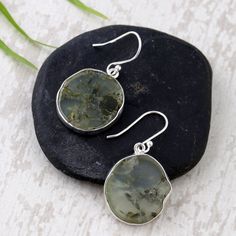
10. Serpentine
Serpentine is the name given to a group of minerals that are green in colour. Serpentine is a stone that is often used in southwestern jewellery. It is usually made into beads or used as a raw stone in jewellery. It is occasionally confused with jade.

11. Sphene
Sphene is the green gemstones name of the mineral Titanite. It is known for its brilliant fire. The dispersion of Sphene exceeds even that of Diamond. However, the stone has a low hardness which makes it difficult to use in jewelry.
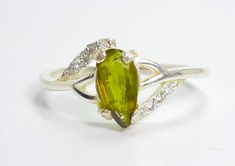
12. Turquoise
The most well-known color of turquoise is the robin’s egg blue made famous by Tiffany & Company. However turquoise also comes in beautiful shades of green ranging from yellow-green to darker blue-green. Green turquoise is highly sought after.

13. Topaz
Topaz comes in a variety of colours, including green, which is less common. Greenish-yellow to dark blue-green is the colour spectrum. Topaz is the birthstone for November. It is a hard stone that is extremely tough and resistant to breakage.

14. Vesuvianite
Vesuvianite, also known as idocrase, was discovered on Mount Vesuvius, the prominent Italian volcano that erupted during the Roman Empire. Rare stones are translucent and can be faceted to create green gemstones. The majority of Vesuvianite is translucent and can be mistaken for jade. The hues vary from bright green-yellow to deep green.

15. Variscite
Variscite’s colour varies from yellowish-green to bluish-green and is often confused with turquoise. This is a soft stone that looks best as earrings or a pendant. It is found in the same areas as turquoise, making it more difficult to distinguish, though variscite is usually greener.

16. Verdelite
Verdelite, also known as green tourmaline, is a green gemstone. The most well-known green tourmalines are Paraiba tourmalines, which range in colour from electric blue to blue-green. Other green tourmalines are light yellow-green or deep blue-green. Tourmalines make lovely jewellery.
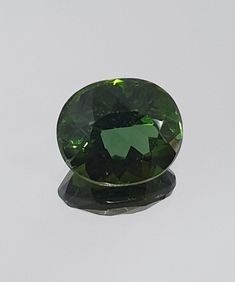
17. Green Chrysoberyl
Mineral chrysoberyl is best known as the classical gem in the eye of the yellow cat and for its variation in colours, alexandrite. But did you know it also comes in green? Beautiful mint green chrysoberyls can be found in a variety of locations, but the demand for these gems is limited. Nonetheless, a well-cut green chrysoberyl will have exceptional brilliance and will make an excellent ring stone.
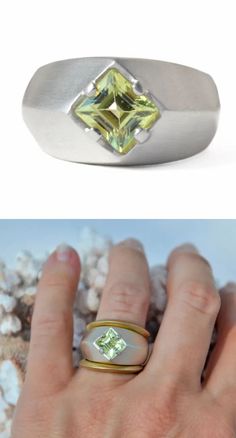
18. Idocrase (Vesuvianite)
Idocrase can produce a beautiful facetted gem in crystalline form. It makes a big jade lookalike in massive shape. In metamorphosed calestones near Mount Vesuvius, the Idocrase crystals occur abundantly, so some people name this stone “veesuvius” Although an unusual gemstone, idocrase has no serious concerns about longevity and can remain in daily wear.

19. Moldavite
If you like everything extraterrestrial or you’re just into olive greens, consider moldavite jewelry. This green gemstone is actually a type of natural glass that forms during some meteorite impacts. When the meteorite hits, it liquefies some of the rock nearby and shoots it up into the atmosphere. (Just like a stone hitting water, only instead of water imagine liquid rock!) As the liquid falls back to the ground, it cools, forming glass.

20. Zoisite
Though Tanzanite is better known for its violet blue variation, zoisite is also available in other colours. Therefore Green Tanzanite, although it is an abnormality, is often referred to as “green tanzanite.” Rarely transparent is Green Zoisite, which makes faceted gemstones a collector’s piece. “ruby-in zoisite” stone may however be a beautiful decorative element, consisting of opaque green zoisite, black hornblende, and opaque red ruby.

21. Serpentine
The official state rock of California and a favorite jade lookalike, serpentine is a lovely stone for carvings or cabochons. Although soft, this metamorphic rock appears frequently in inexpensive jewelry. With olive green hues, serpentine makes an interesting decorative stone as well.

22. Prehnite
The apple green prehnite can render fascinating cabochons rarely transparent. Some lapidaries have transparent stones that look soft and sunny. This gemstone is very resistant to scratches at 6 to 6.5 Mohs, but its cleavage can be challenging to remove.

23. Green Apatite
Currently, Apatite is a mineral group that includes several gemstone types, but the word applied to any family member is also found.
Although the most popular colour is blue green, there are also verdant saphitis or asparagus stones. Be attentive to apatite gemstones, however. For pendants and earrings, reserve this soft and fragile stone.

24. Green Apatite
Currently, Apatite is a mineral group that includes several gemstone types, but the word applied to any family member is also found.
Although the most popular colour is blue green, there are also verdant saphitis or asparagus stones. Be attentive to apatite gemstones, however. For pendants and earrings, reserve this soft and fragile stone.

25. Variscite
Variscite, a common material for cabochons and gravures, has beautiful green hues. Although this stone is too soft for use, it can be very attractive to the ring. For thousands of years, people prized these beads. Indeed, neolithic variscite beads were discovered by archaeologists in France over 6000 years.
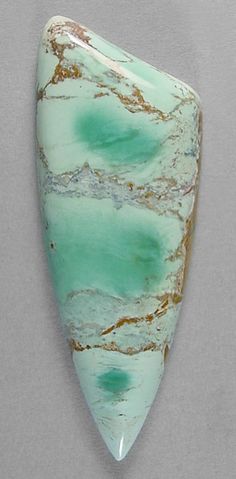
26. Kornerupine
This unique gemstone is most appreciated for the green, emerald colours. Kornerupin is uncommon and typically small as a facetted gemstone, and prices for larger sizes rise rapidly. Although the hardness of kornerupine varies from 6 to 7, it has a perfect division into two ways, so it can break simply if it has the wrong way.
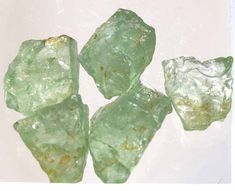
27. Chrome Sphene
With emerald color and more fire or dispersion than diamond, chrome sphene is a rare and fascinating gem. Although soft and brittle, this stone sometimes makes its way into jewelry. This sphene variety is the rarest and most valuable, and stones with good clarity above one carat are collector’s items.

28. Ekanite
Consider adding an ecanite to your set if you want to live dangerously. Although the subdued green olive colour of the mineral does not cry out “Danger,” it contains uranium and thorium which is radioactive. Even a 5-ct gem is less than quadruple the total annual radiation exposure though little sizes are not a great health risk. Check out our toxic and radioactive gemstone protection article if you want to cut ekanite or to include one in your set.
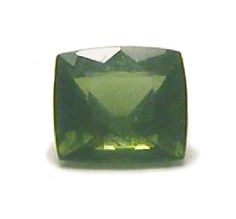
29. Hiddenite
Hiddenite, one of the hardest gems to cut, will only break down when lapidaries try it. The green variety of hiddenite is the mineral kunzite that you might know best for its rose variety. Spodumene has two diaphragmatic planes, so that it can split with little strength.
While hiddenite may be best left in a displaying case, it should not pose too much danger if you wear it carefully around your neck as a pendant. Save this gem only for the night because its colours would decrease with extended exposure to sunlight and even light.

30. Gaspeite
Light-green petroleum is a common collector-bearing nickel mineral. But you should still be careful about it. Skin irritation and may be carcinogenic can cause nickel. Since the mineral is soluble in some acids, it can lead to a toxic reaction by wearing it against the skin and by accidental ingestion. Using a dust mask for avoiding inhalation of particulate matter while cutting these stones can allow you to prevent any negative effects.

31. Seraphinite (Clinochlore)
Seraphinite cabochons have found their way into jewellery, a trade name for swirling green clinochlore. But if left at home for show only, this pillar could do better. It is fragile that it can be scratched even by the fingernail. This means a polished cabochon is wearing and time-consuming. Still, seraphinite can be a low price pillar visually appealing.

32. Aventurine
The natural sparkles of this form of quartz are included. The light is sparkled by flat, thin inclusions of crystal that trigger adventure. The quartz is also coloured blues-green in these minerals. This stone is definitely long enough for daily wear with a hardness of 7. (Be aware that the “gold stone” is also known as a handicraft glass, but it’s not the same as quartz aventurine). (Be aware of this).

What is the most expensive green gemstone?
The so-called imperial jade is the most expensive after shade in the world of semi-transparent emerald grass.
How do you identify a green gemstones?
It’s transparent if you can look through the stone but the picture is cloudy. Only to name a few of the green semiprecious variants: the transparent to translucent stones dioptate, atacamite, variscite, olivine and peridite. Malachite is transparent to opaque, on the other hand
Can Rubies be green?
In the pure spectral colours of red, orange, yellow, green, blue and purple transparent gemstones occur. Ruby’s red identified. Saphire is named in all the other hues of the gem genus corundum. Ruby can have a number of secondary hues, such as orange, yellow, purple and pink.




